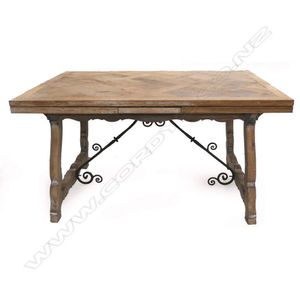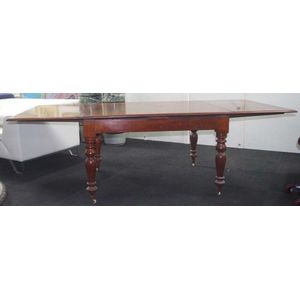Draw leaf tables are tables that feature one or more leaves that can be pulled out or "drawn" from the end of the table to expand the surface area of the table. This type of table has been in use for centuries, dating back to at least the 16th century in Europe.
During the medieval period, draw leaf tables were primarily used by the upper class and were made from expensive materials like oak and walnut. They were often highly decorated with carvings and inlaid designs, and were considered a symbol of wealth and status.
In the 17th century, draw leaf tables became more common in middle-class households, as advances in furniture-making techniques made it possible to produce them more affordably.
In the 18th and 19th centuries, draw leaf tables continued to be popular, particularly in rural areas where space was limited. They were also used in urban
more...
areas, where they were popular in small apartments and homes. The design of draw leaf tables remained relatively unchanged, but the materials used in their construction and the types of legs and other supports that were used changed to reflect the fashion of the time.
less...



 Loading more...
Loading more...